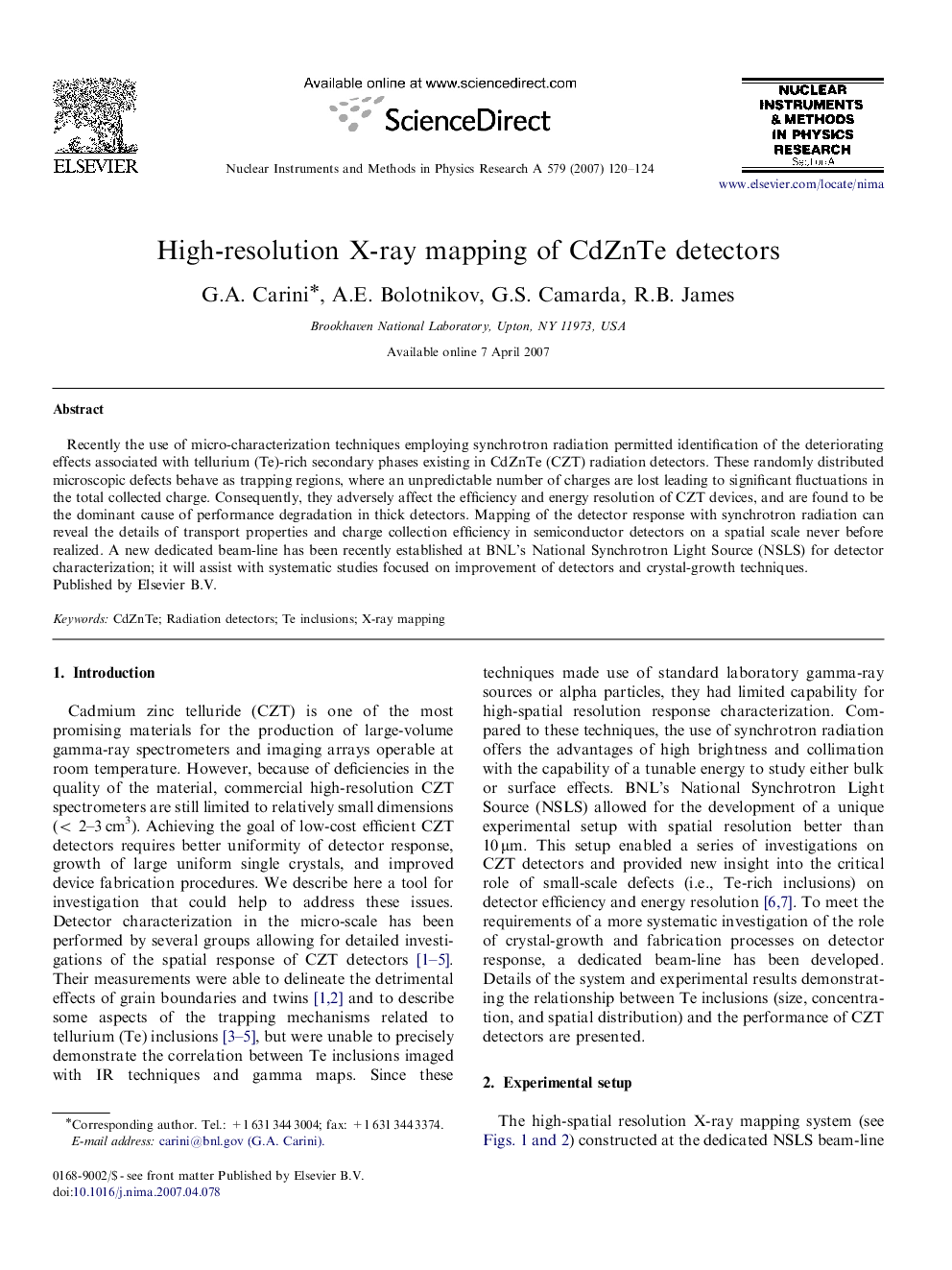| Article ID | Journal | Published Year | Pages | File Type |
|---|---|---|---|---|
| 1830687 | Nuclear Instruments and Methods in Physics Research Section A: Accelerators, Spectrometers, Detectors and Associated Equipment | 2007 | 5 Pages |
Recently the use of micro-characterization techniques employing synchrotron radiation permitted identification of the deteriorating effects associated with tellurium (Te)-rich secondary phases existing in CdZnTe (CZT) radiation detectors. These randomly distributed microscopic defects behave as trapping regions, where an unpredictable number of charges are lost leading to significant fluctuations in the total collected charge. Consequently, they adversely affect the efficiency and energy resolution of CZT devices, and are found to be the dominant cause of performance degradation in thick detectors. Mapping of the detector response with synchrotron radiation can reveal the details of transport properties and charge collection efficiency in semiconductor detectors on a spatial scale never before realized. A new dedicated beam-line has been recently established at BNL's National Synchrotron Light Source (NSLS) for detector characterization; it will assist with systematic studies focused on improvement of detectors and crystal-growth techniques.
